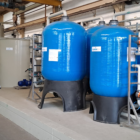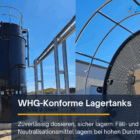Sugar production is a water-intensive industry that produces large quantities of wastewater containing both organic and inorganic pollutants. In addition to the treatment of process water and the treatment of vapor condensates, wastewater treatment plays a decisive role. Biogas plants, nitrogen and phosphorus elimination as well as specific challenges such as the calcium problem are comprehensively addressed in modern wastewater treatment plants.
Table of contents
Composition of wastewater in sugar production
The characteristics of the wastewater from sugar production depend on the various process steps, in particular beet washing, juice extraction, juice purification, evaporation and sugar crystallization. Typical components are
Organic loads:
- Sugar, molasses, starch, pectins and cellulose fibers from beet processing.
- High chemical oxygen demand (COD) and biological oxygen demand (BOD) due to easily degradable organic substances.
Inorganic substances:
- Calcium compounds (e.g. CaCO₃) from the liming and softening of juices.
- Nitrogen compounds (e.g. ammonium, nitrates) and phosphates from process chemistry.
Vapor condensates:
- These contain volatile organic substances such as methanol and residual sugar as well as inorganic salts and must be treated separately.
High water hardness:
- Calcium and magnesium from well water lead to challenges in process water treatment and require specific technologies such as ion exchange or reverse osmosis.
Biogas plants for wastewater treatment
Biogas plants are a key component of wastewater treatment in the sugar industry. These plants use anaerobic processes to break down organic substances and produce biogas, which can be used as a source of energy.
Anaerobic wastewater treatment
- How it works: Microorganisms break down organic substances such as sugar, starch and cellulose in an oxygen-free environment. This produces methane (CH₄) and carbon dioxide (CO₂).
- Reactor types:
- High-load reactors: Suitable for wastewater with high COD concentrations (up to 20,000 mg/L).
- UASB reactors (Upflow Anaerobic Sludge Blanket): Effective for wastewater with a high solids content.
- ALMA BHU GMR: Specific anaerobic biogas plants from ALMAWATECH designed to meet the requirements of the sugar industry.
Advantages of biogas plants:
- Energy generation: The biogas produced can be used to generate steam or electricity, which reduces operating costs.
- COD reduction: Anaerobic processes reduce COD by up to 85 %, which significantly reduces the load on downstream treatment.
- Compact sludge formation: Compared to aerobic processes, less excess sludge is produced.
Challenges:
- Calcium problem: In sugar production, calcium is formed from calcification processes. In biogas plants, it can lead to deposits (scaling) that impair the efficiency and service life of the plants.
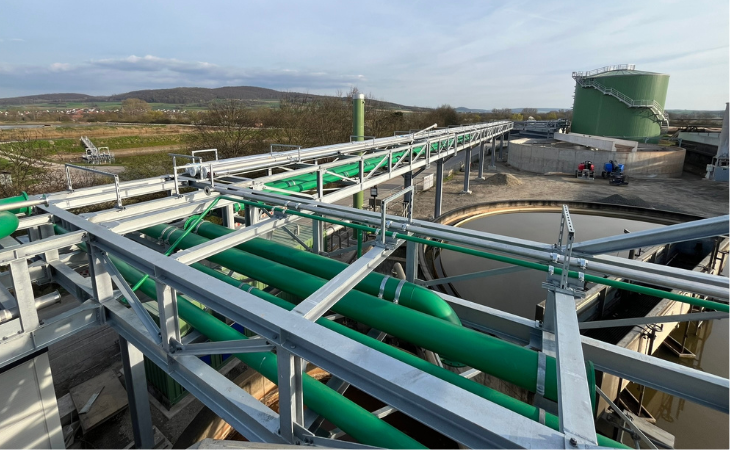
Photo: Our ALMA BHU GMR biogas plant for the production of biogas from waste water from the sugar industry
Post-treatment: Nitrogen and phosphorus elimination
After anaerobic treatment, the remaining wastewater often contains high concentrations of nitrogen and phosphorus, which must be removed in order to comply with legal requirements and prevent eutrophic discharges into bodies of water.
Nitrogen elimination
- Biological nitrification and denitrification:
- Nitrification: Ammonium (NH₄⁺) is converted into nitrite (NO₂-) and then into nitrate (NO₃-). This process requires oxygen and special nitrifying microorganisms.
- Denitrification: Nitrate is reduced to nitrogen gas (N₂) under anoxic conditions, which causes a reduction in nitrogen pollution.
- Chemical processes:
- In the case of very high nitrogen concentrations, chemical removal by ammonia stripping or precipitation may be necessary.
Phosphorus elimination
- Chemical precipitation:
- By adding precipitants such as iron(III) chloride or aluminum sulfate, phosphates are converted into insoluble compounds that can be removed from the wastewater.
- Biological phosphate removal:
- Phosphorus-accumulating organisms (PAOs) bind phosphorus in the form of polyphosphates. This method is used in biological treatment stages.
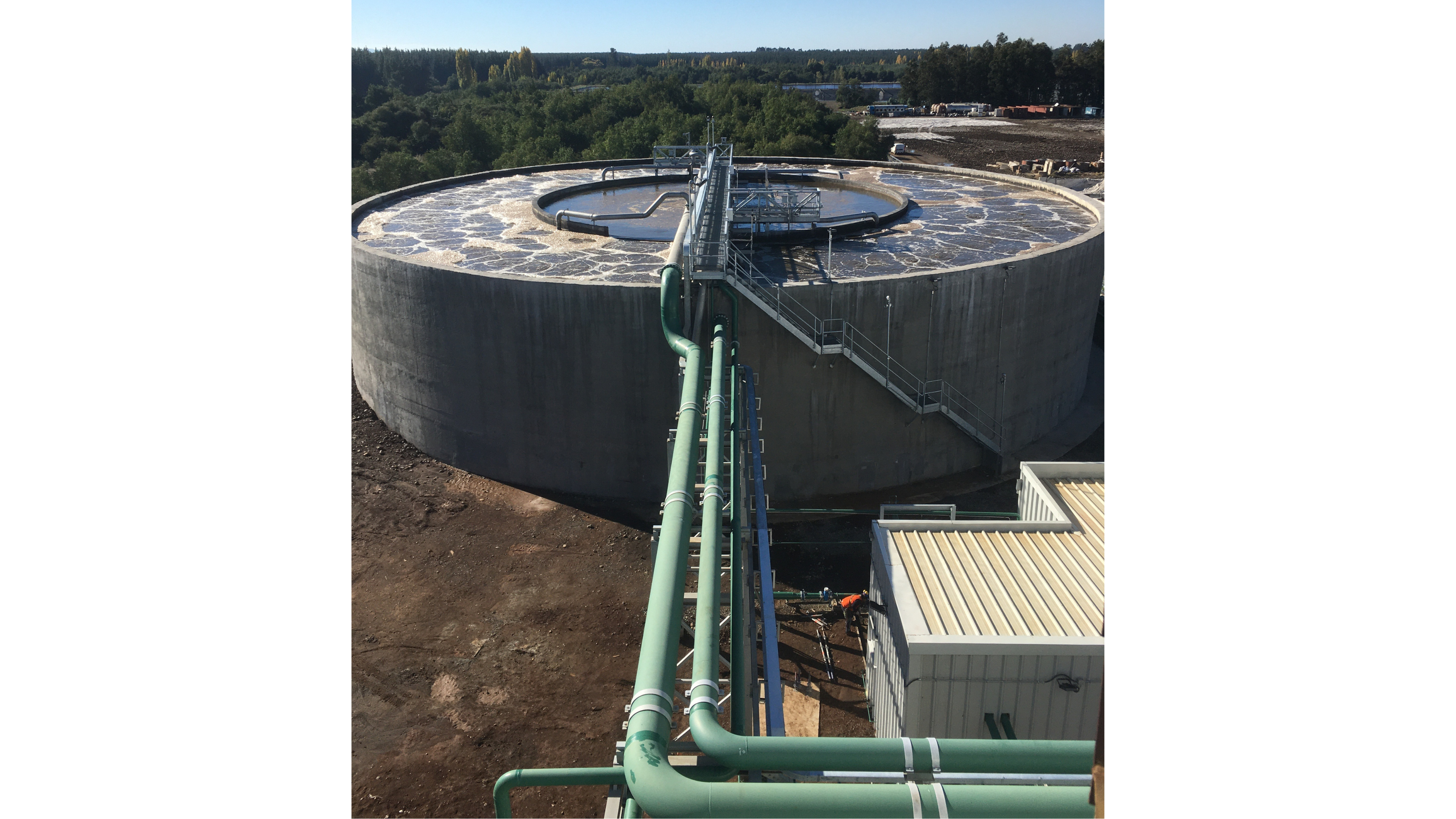
Photo: Our ALMA BHU BIO biological treatment plant for the post-treatment of wastewater from biogas plants
Process water treatment
Process water treatment in the sugar industry often uses well water, which has to be specially treated due to its high hardness and dissolved salts.
Technologies for process water treatment
Ion exchanger:
- How it works: Hardness constituents (Ca²⁺, Mg²⁺) are exchanged for sodium ions to reduce the water hardness.
- Application: Softening of raw water to prevent scaling in evaporators and boilers.

Photo: Our ALMA FIL multi-layer filters with downstream ALMA ION ion exchanger
Reverse osmosis (RO):
- How it works: The raw water is forced under pressure through a semi-permeable membrane that retains salts, hardness constituents and organic impurities.
- Application: Production of high-purity water for steam production and the dilution of process chemicals.
Challenges:
- Scaling: The high calcium concentration in well water can lead to deposits on membranes and in ion exchange resins.
- Possible solutions: Use of anti-scaling agents and regular regeneration of ion exchangers.
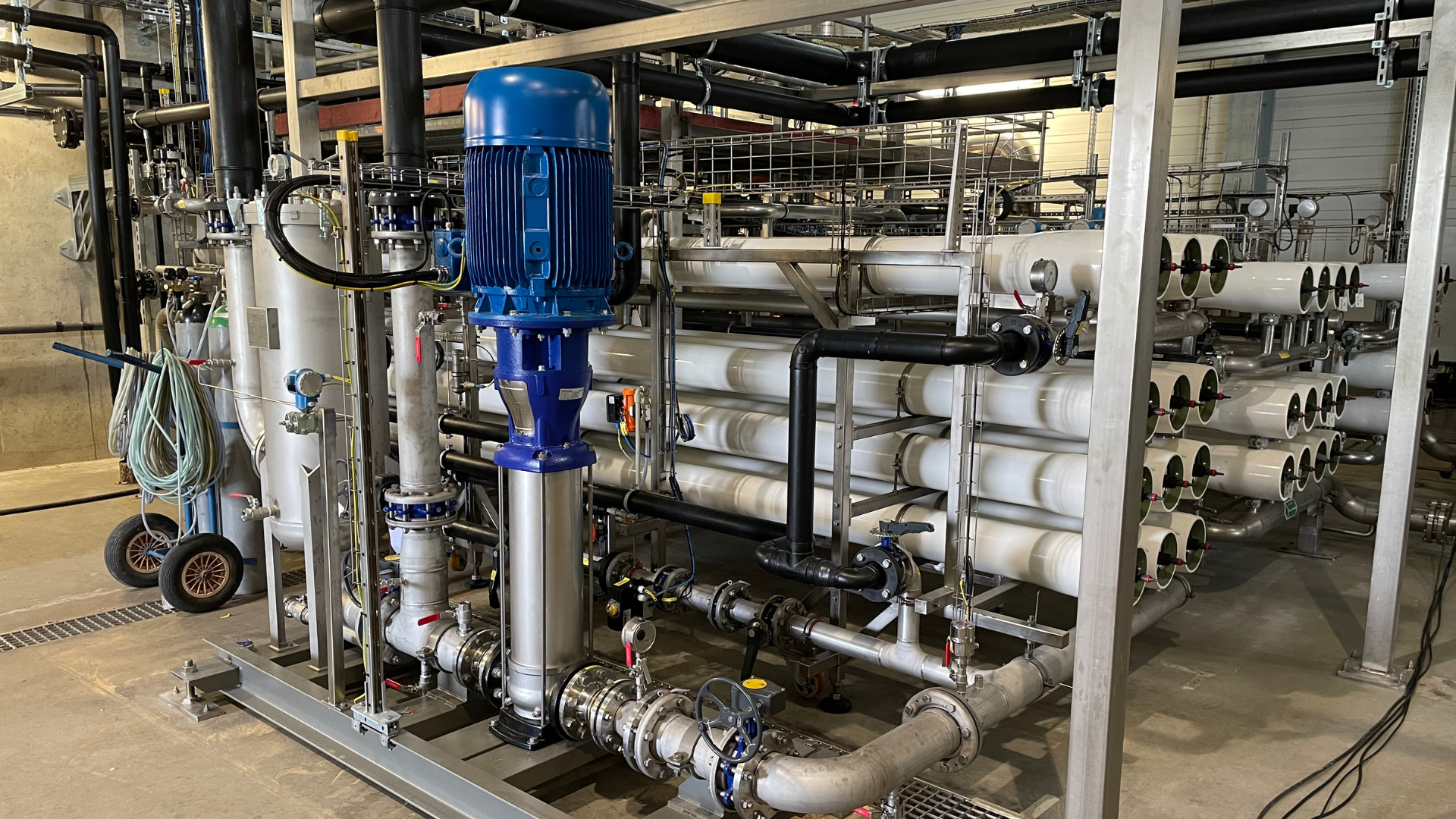
Photo: Our reverse osmosis system for the production of process water
References and products in the sugar industry
- Our ALMA BHU GMR biogas plant for the sugar industry: ALMA BHU GMR
- Sugar factory in Germany, biogas plant, 220 m³/h: For reference
- Sugar factory in Poland, biogas plant, 125 m³/h: For reference
- Sugar factory in Germany, Südzucker, 45,000 kg COD/d: For reference
- River water treatment in Germany, Südzucker, 220 m³/h: For reference
- River water treatment for the sugar industry, 2 x 275 m³/h: For reference
- Sugar industry, Chile, aerobic post-treatment, 120 m³/h: For reference
Conclusion
Wastewater treatment in sugar production is a complex task that requires state-of-the-art technologies. Biogas plants offer an efficient way of breaking down organic loads and recovering energy, while downstream processes such as nitrogen and phosphorus elimination ensure compliance with legal requirements. Challenges such as the calcium problem and the treatment of vapour condensates require specific solutions that are individually adapted to the respective requirements. By integrating technologies such as ion exchange and reverse osmosis, process water treatment can be optimized to ensure resource conservation and cost efficiency.
For further information on our products, please feel free to contact us at any time!


